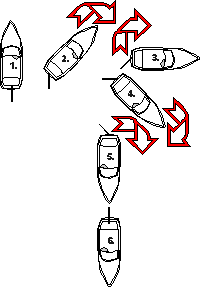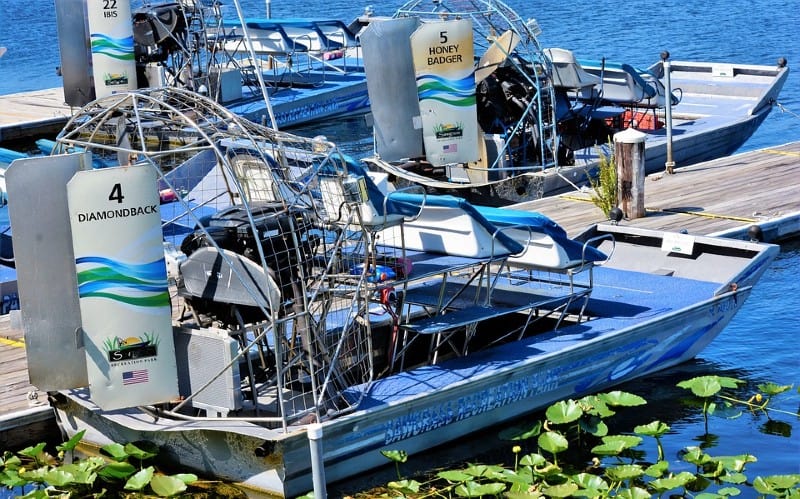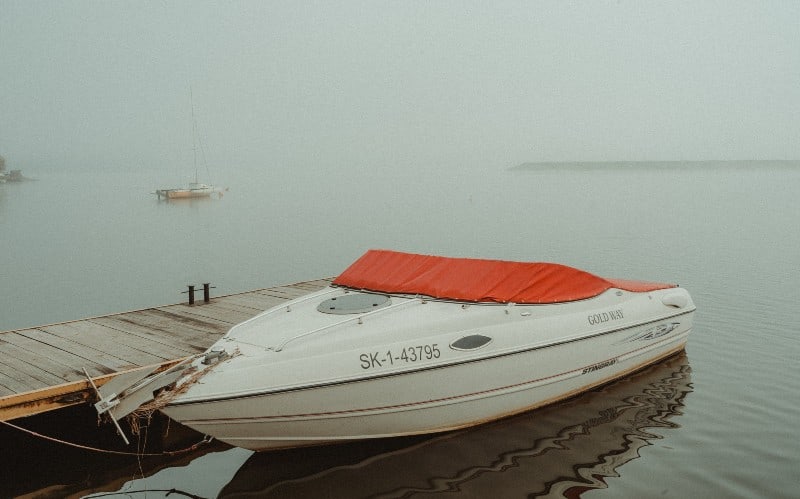The Basics of Boat Maneuvering
What is the most intimidating part of boating? Some might say the costs, but let’s assume that’s not an issue. Learning how to captain the boat. Maneuvering a boat is not like maneuvering any vehicle on land. It is a completely different process. This can be hard for some boaters to get a hold of. But once you get the hang of it, you can be a true sailor in no time.
The big problem many would-be skippers have with taking the helm is getting oriented. Boats use aerodynamic and hydrodynamic forces. That can be confusing. Especially since they change from boat to boat. Maneuvering a jet boat is different from maneuvering a sailboat. And that is different from maneuvering a kayak. They are very similar, to be sure. But wind and current, engine power and more affect your boat handling skills.
Let’s take a look at the basics of how to maneuver a boat. We’ll cover what you need to refine your boat handling skills. What it means to be a competent captain and get you up to speed with other boaters.
Back and Fill

If you don’t know how your propeller works, it’s very easy to check. Just stand behind your boat at the stern/ have someone shift into idle ahead propulsion. Take a look at how the prop is spinning. If it spins to the right you have a right hand propeller. If it spins to the left, you have a left hand propeller.
For this example, let’s assume a right hand screw. You need to turn around in tight quarters. How do you do it?
Assuming favorable conditions, the process involves a few steps.
- Start the process at idle speed on the left side of the channel
- In order to start the maneuver you put the rudder hard to starboard. This will start the bow turning.
- As the bow comes about, shift to reverse. This starts what is called prop walk. The stern will now start moving to port.
- Check your forward momentum. You can now shift back to forward.
- The momentum of the bow will continue at the point. It will rotate around the pivot point.
- Shift to reverse once more to complete the turn.
This is a 6-step process in ideal circumstances. It’s not set in stone. Just like a three-point turn in a car can sometimes take more than three points. This maneuver can sometimes take several shifts. You may need to go forward and back a few times to get the perfect pivot and a 180-degree turn. The point is only to pivot. You don’t want to make headway or sternway at all.
- Your rudder should remain hard to starboard for the entire maneuver.
- To keep everything smooth, stop in neutral for a moment between every shift.
- You should only stay in gear long enough to pivot. If you start making headway or sternway, you’ve stayed too long.
- When conditions are not ideal, you may need short bursts of throttle to help you along. Keep it controlled, though.
- If you have a left hand screw, then all of this must go in reverse. That means you start on the right side of the channel. You’d eek the rudder hard to port, etc.
Backing into a Slip
If you plan to dock a boat, you’re probably going to need to back it into a slip. This isn’t for small boats, but if yours is large enough, this is a basic docking maneuver. Just remember one of the most important rules of maneuvering a boat with a single engine – stern moves first. Doesn’t matter if you are going forward or backwards. It can be an easy lesson to forget that the bow responds to the stern.
The docking process can be intimidating. Make sure you know how prop walk moves your boat. If it makes you head to port or to starboard. You’ll need to compensate for that when docking.
- Position your boat at a right angle to the slip. Stay around 30 to 35 feet off the slip if you have the space.
- Stop the boat when the transom aligns with the dock. Do this by shifting into reverse.
- Shift to neutral and turn to port.
- Engage forward and then give it a little throttle. This will shift the bow to port.
- Shift to neutral and turn to starboard.
- Engage reverse and give another short burst of throttle. This will move the stern to starboard.
- When you are lined up with the slip, engage reverse and leave it in gear. Back in carefully.
- Adjust your position with forward or reverse thrust if needed.
- When you’re level, give a quick forward burst to stop the boat.
At this point, someone can now get on the dock and secure the boat with the dock lines.
There are 9 steps here. But just like with the back and fill, they may not work in 9 easy steps! Keep adjusting, following these steps, until you are lined up with the slip. If you end up missing the mark, abort the maneuver. Head out of the slip and start the process again. Better to start from scratch than cause any damage.
- Don’t be afraid of the throttle here. Obviously you’re not trying to win a race. But many first timers will not use enough for fear of using too much.
- Make sure you’re turning the wheel or rudder before engaging gear. Don’t do it after.
- Keep an eye on wind and current. These can play havoc when trying to line up your single engine vessel. Especially if it’s a narrow slip. If the boat isn’t lined up with the dock, try again. You’re the captain here.
- Not every slip is going to be the same size. If you have been boating a while, you definitely know this. An ideal slip has lots of room to dock a boat comfortably. Many are very cramped and require a little more caution and care. As long as it’s big enough for your boat, this technique will always work. Like we said, you may just need practice to get it down.
Docking Side-To
Docking your boat alongside a dock is called docking side-to. This can be accomplished in just a few relatively easy steps. Much of how you do this depends on winds and currents. They can help you, but you may also need to work against them.
- Gauge your approach. If the wind is at your back you may need to come in shallow. If the wind is pushing against you, you’ll need to adjust your engines to compensate.
- Monitor your speed. Don’t rush forward and risk hitting the dock. You’ll have to move in and out of gear to maintain a slow, manageable pace here. What’s a good speed? Well, never approach the dock any faster than you’re willing to hit it.
- Aim your bow for the center of where you plan to dock. The wind and current can help push you the distance if they’re at your back. If not, keep applying forward momentum to get you within range.
- When you’re about a boat length from the dock, you need to engage a bow swing. If you’re coming in for a port side tie, swing the boat hard to starboard. Otherwise, do the opposite.
- Apply some throttle to get the boat to swing. Your stern should now be heading to port.
- Once you’re parallel with the dock, it’s time to turn hard to port.
- Put the engine in reverse to stop your forward moment.
At this point you should now be parallel and even with the dock. You can grab the dock lines and secure the vessel in place. As with any maneuver, if you were off slightly there’s no harm. Try the maneuver again until you get it right.
Take some extra care if other boats are docked this way. You’re basically parallel parking at this point. If you need to maneuver between two other docked boats, your room for error will be diminished. That’s why keeping an eye on speed and approach is always important. If you feel you are coming in too steep, back off. Better to try a second time then to hit someone else’s boat.
Your best bet is to practice in an area with no other boats. Once you master the basics, try to tighten things up. See how close you can get to the dock without having to adjust too far forward or in reverse. That will get you ready to parallel park alongside others.
Using Spring Lines to Get Off a Dock
When the wind is up, getting off the dock can be a hassle. Springing off the dock can help. It requires using spring lines and pilings. Also fenders to prevent damage. And someone to lend a hand. This lesson can be hard to master.
- Have a rope run from a mid ship’s cleat on the boat around a piling on the dock. Loop it around and back to the boat. Do not tie it.
- Have someone hold the line. They will also need to place fenders between the boat and the dock to prevent damage.
- Secure the rope around the midship’s cleat with one turn.
- Shift the boat into stern gear. This should create tension on your line.
- Turn the wheel towards the dock causing the bow to swing out.
- Get the bow is clear and ensure the boat is at a 45 degree angle to the dock. Now you can shift to forward and turn the wheel away from the dock.
- The crewmate can not release the line, pulling it on board so that it comes free of the piling. Bring the fenders on board also.
- Stay in forward until you are clear of the dock.
- The wind is working against you here. The spring takes advantage of how the wind works to get you moving.
Things to Remember
No one starts as an expert captain. The controls take time. When you’re at the helm, it’s going to take some time to figure it all out. Luckily, there is technology to help. And no one is expecting expertise right away. Practice makes perfect, as they say. Don’t be intimidated by another captain or crew who are old salts. Everyone had to start somewhere. Learn to work with wind and current. In time, you can use wind to make some of these techniques easier.
Important Factors
Technology: Understand how your propeller works. If you have a twin engine boat, it will respond differently. Likewise a bow thruster can affect maneuverability. Not every boat has a bow thruster, but if yours does, it makes maneuvering the bow much easier. It’s a propulsion system at the bow for improved maneuverability.
Engines: Single engine craft obviously have a single engine. A twin engine has two. The engine count affects handling. This includes things like docking, throttle, controls, and more.
Weather: The wind and current will cause you to alter your approach. Boat handling depends heavily on understanding wind direction and current. Conditions on the water are ever changing. How you respond to these conditions has an effect on the action you take.
Attitude: Sometimes, keeping cool on approach is as important as the way you approach. When things look tight, you need to keep a cool head. Plan your approach. Plan your backup too if things go wrong. Be ready to deal with unexpected wind gusts and other boats that are having problems. This is especially true in a marina or around a pier. If another boat is having trouble docking, you may need to adjust your approach.
Your ability to handle whatever comes can go a long way to make taking the helm an easier experience. You’ll be a competent captain in no time with practice.
Categories: nauticalknowhow















